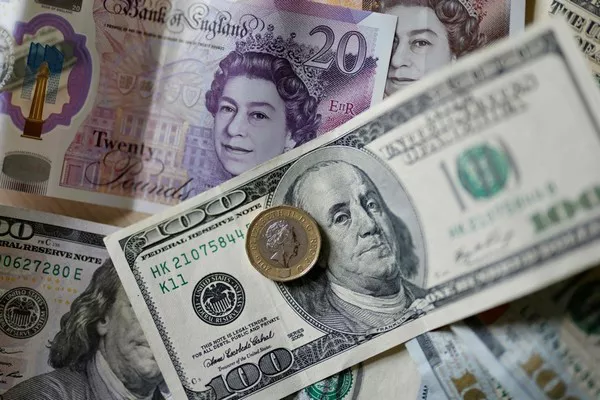Collecting rare and vintage currency notes is a fascinating hobby for many enthusiasts. Among the myriad of bills that exist, the 1974 two dollar bill holds a special place due to its unique design and historical significance. If you’re curious about the worth of a 1974 two dollar bill in today’s market, this comprehensive article will provide you with insights, factors to consider, and tips for assessing its value.
The Background of the 1974 Two Dollar Bill
Before delving into the appraisal of a 1974 two dollar bill, it’s important to understand the historical context and design features that make it distinctive.
The 1974 two dollar bill is a part of the United States’ legal tender currency, featuring a portrait of Thomas Jefferson, the third President of the United States, on the obverse side. On the reverse side, the bill portrays a depiction of the signing of the Declaration of Independence. This design is unique and sets it apart from other denominations.
Is it Rare or Valuable?
The value of a 1974 two dollar bill depends on various factors, including its rarity, condition, and collector demand. Let’s explore these factors in detail:
Rarity: Rarity plays a significant role in determining a bill’s value. Two dollar bills from 1974 are relatively common, and many of them are still in circulation. However, within this year, there may be specific variations or printing errors that make some bills rarer than others.
Condition: The state of preservation or condition of the bill is crucial. Uncirculated bills in mint condition, free from creases, stains, or tears, are generally more valuable to collectors. Well-preserved bills command higher prices.
Serial Numbers: Some collectors are interested in bills with unique or interesting serial numbers. For example, bills with repeating numbers, low serial numbers, or “star” notes (replacement notes marked with an asterisk) can be more valuable to collectors.
Printing Errors: Bills with printing errors, such as misprints, misalignments, or ink smears, can also be highly sought after by collectors. These errors add uniqueness and value to the bill.
Seal Color: The seal color on a 1974 two dollar bill can be either red or green, and some collectors prefer one over the other. While the seal color doesn’t dramatically affect the value, it can influence collector preferences.
Assessing the Value
To determine the value of a 1974 two dollar bill, you can follow these steps:
Check the Serial Number: Examine the serial number on the bill. Unique or interesting serial numbers can add to the bill’s value. For instance, bills with low serial numbers, like “000001,” or repeating numbers (e.g., “123123”) are often sought after.
Inspect the Condition: Assess the condition of the bill. Look for any creases, tears, stains, or discoloration. Bills in pristine, uncirculated condition generally have a higher value.
Examine for Printing Errors: Inspect the bill for any printing errors, misprints, or misalignments. These can significantly increase the bill’s worth.
Consider Seal Color: Determine the seal color on the bill. While this doesn’t usually have a dramatic impact on value, it can influence the preferences of collectors.
Consult with Experts: If you’re unsure about the value of your 1974 two dollar bill, consider seeking the expertise of currency collectors, dealers, or appraisers. They can provide a more accurate assessment based on the bill’s unique features and market demand.
Market Demand and Collector Trends
The value of a 1974 two dollar bill is also influenced by market demand and collector trends. While some bills may be technically rare or have unique features, their value may not be as high if there isn’t a strong demand among collectors.
Collector trends can shift over time, and what is considered valuable today may not hold the same value in the future. To get a better understanding of the current market for 1974 two dollar bills, you can refer to collector forums, auction sites, and currency price guides. These resources can provide insights into recent sales and the level of demand for specific bill variations.
Preserving and Displaying Your 1974 Two Dollar Bill
If you own a 1974 two dollar bill and want to preserve its condition and display it effectively, consider the following tips:
Store it Properly: Keep your bill in a protective currency holder or sleeve to prevent damage from handling, light, and moisture.
Avoid Excessive Handling: Minimize the handling of the bill to prevent creases and wear.
Frame it: If you wish to display your 1974 two dollar bill, consider framing it in a way that protects it from environmental factors and UV light, which can cause fading.
Keep it Clean: If you notice any dirt or stains on the bill, consult a professional currency conservator to ensure proper cleaning and preservation.
Conclusion
The value of a 1974 two dollar bill can vary based on its rarity, condition, unique features, and market demand. While most 1974 two dollar bills are not extremely rare, bills with interesting serial numbers, printing errors, or exceptional condition can hold significant value to collectors. If you’re considering selling or investing in such bills, conducting thorough research and consulting with experts is essential to ensure you receive an accurate assessment of their worth. Remember that the field of currency collecting is influenced by ever-changing trends, so staying informed about current market dynamics is key to making informed decisions.


